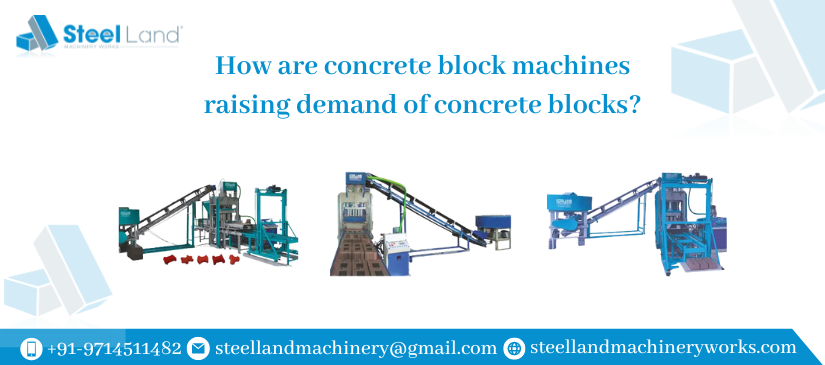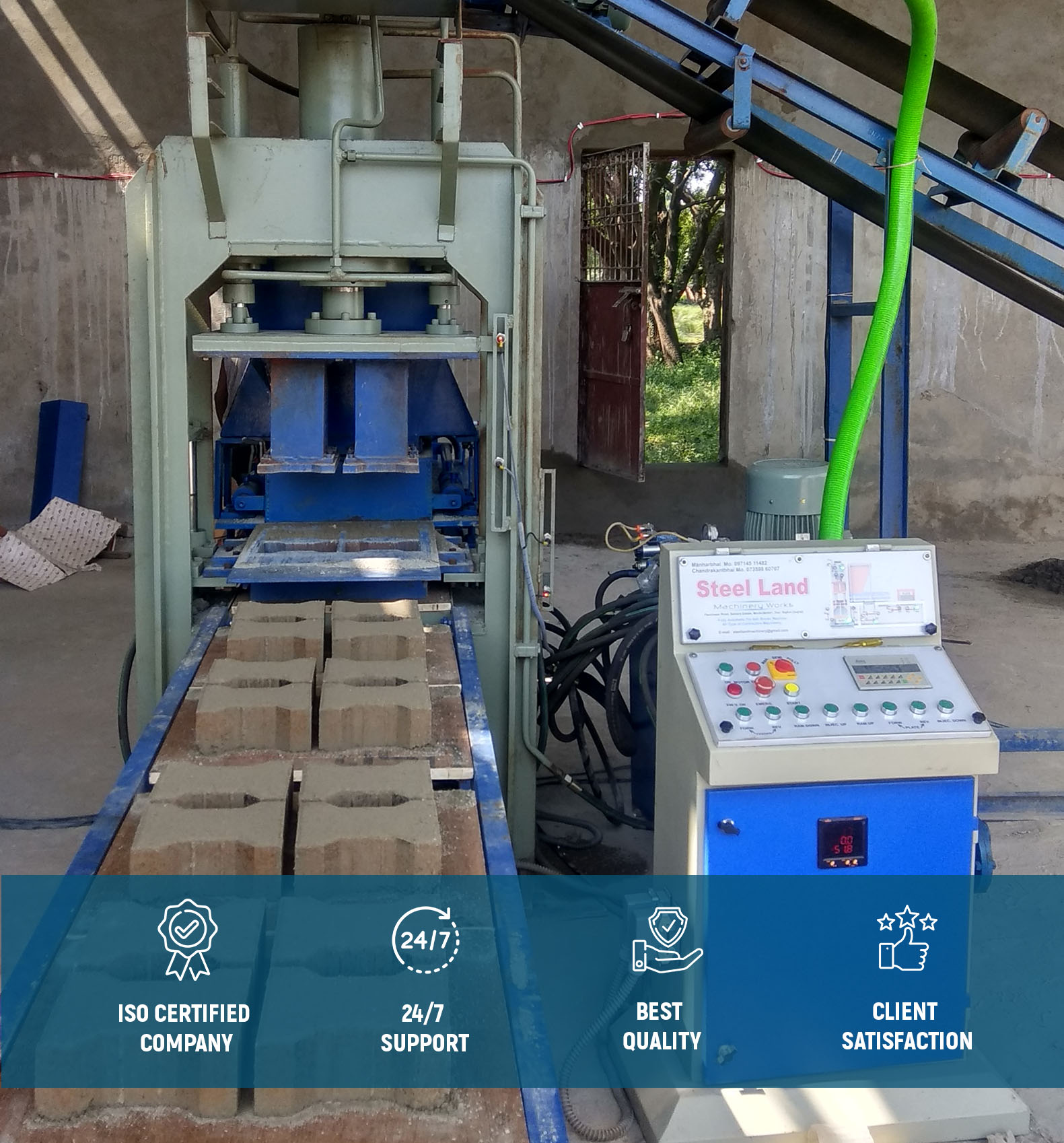The fundamental building component for building walls and other structures is a concrete block. Concrete blocks typically have smooth sides or patterned sides, with cavities in between. Since prehistoric times, concrete blocks have existed in one form or another. Over the years, the manufacturing method for these blocks has undergone numerous alterations, and today concrete blocks are made with a concrete paver manufacturing machine. Sand, gravel, water, and powdered cement are combined to make concrete blocks. Four fundamental steps in the production process are mixing, moulding, curing, and cubing. These blocks are produced at a pace of more than 2000 blocks per hour by concrete block machines.
Working of a concrete block making machine.
Slag, stone powder, mining slag, industrial stone, pulverised coal ash, industrial cement, industrial sand, and other materials in similar proportions combined with water are raw materials used in the manufacturing of blocks. Utilising a certain ratio of materials is crucial to avoiding machine damage. Cement is the most crucial component. Ensure that it is put to use.
The concrete block machine, manufactured by reputable concrete block making machine manufacturers, employs vibration and pressure to manufacture various concrete block types using various moulds. After that, the machine is subjected to high pressure, producing cement, hollow, and pavement blocks of excellent quality. Because the entire operation may be carried out without fire, this block-making equipment is often referred to as a non-burning block machine.
Reasons for increase in demand and some facts
- By 2027, the demand for concrete blocks and bricks is expected to reach 2769.24 billion units.
- The majority of the world’s architectural marvels were constructed using concrete blocks.
- They are not impacted by sound or earthquakes, and they are resistant to fire.
- This is preferred by architects and builders mostly due to its beauty, robustness, and adaptability.
- Since the Roman era, concrete blocks have been used, and their use has grown since then.
- Using these bricks to build cavity walls can lessen the issue of water seepage.
- During the production process, they have the least negative impact on the environment.
- Compared to other construction materials, they require less insulation. This is a result of its lack of heat absorption.
- Since this kind of material doesn’t release volatile gases or harmful flames when it catches fire, recycling it is simple.
- Structures made of this material typically endure for thousands of years without experiencing significant problems.
- Because of its adaptability and aesthetic appeal, designers adore it.
- More than 70% of structures are made of concrete blocks, which also have a high resale value and cheap insurance rates.
- It is well-liked everywhere in the world.
- It is resilient, strong, and can even resist tornadoes and other severe weather.
Application of concrete blocks
Concrete blocks are becoming more and more in demand across numerous sectors of the building industry. These come in a variety of sizes and shapes, and they make it simple to build constructions that you want. They are frequently helpful in constructing block walls, and doing so has several advantages. Blocks of this kind are beneficial for both residential and commercial properties. Blocks of concrete are frequently employed as security obstacles. They accomplish this by placing them side by side to block access for both cars and pedestrians to a particular region. In many other locations, they are frequently employed for traffic control as well.
Because concrete bricks are more durable than regular cement, they are the best choice for building walls, basements and site foundations. These materials are weather-resistant and unaffected by temperature changes. An additional benefit is that it is less expensive and environmentally friendly.



